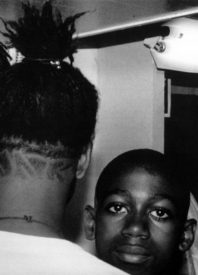
There’s a motif in Black Is… Black Ain’t where Marlon Riggs brings up cooking, showing how different ingredients make different dishes. This makes sense as he interviews multiple Black people about their racial identity. And how identity intersects with other identifiers concerning gender and sexual identity. These subjects comprise Black men and women from different quotients. But I suppose my subconscious prejudices will make me gravitate to some scenes. Scenes where Riggs points his camera to Black intellectuals like bell hooks. I imagined her as untouchable superhuman. What she was, then, was a forty year old with a high voice talking about Eddie Murphy.
Riggs and her other fellow subjects have things to say about Eddie Murphy and Ice Cube and Blackness in general. And how many men in the 90s equated their power with domination and how that domination targets women. The film came out in the 90s when misogyny was more mainstream. Viewers nowadays can hide themselves from that misogyny, racism, and homophobia by turning their devices off. But that doesn’t mean that those pernicious prejudices aren’t as present now as they were when Riggs was alive. This documentary exposes those issues and is available on The Criterion Channel and other streaming services since October.
But Criterion specifically does a great job in restoring this film. Viewers need that visual clarity when Riggs cuts from the interviews and switches to imagery of hospitals. He stayed in one, filming footage for this film during his last year of fighting AIDS. The juxtaposition between Black intersectionality and AIDS speaks volumes. On how everyone, including LGBT2+ men and women, took part in the fight for Civil Rights. And how heterosexual men kept some of those freedoms for themselves. Black Is… Black Ain’t also shows how mainstream thinking warped Black identity as one that exists within a binary, making many Black people subconsciously thinking into choosing within other binaries.
Those binaries, then, are inherently oppressive. Man or woman, gay or straight, urban and rural. The mixture of imagery here is another subversion of those binaries. He’s doesn’t just capture his interviews or the hospital where he spent his final days. He also shows Black farmers toiling the land. Many Black farmers descended from of people who inherited land during the Reconstruction period. And the film shows them using modern tools while connecting with that land and caring for the animals there. This deconstructs the stereotype of Black people and other people of color as urban people. His imagery is just one of his many tools to show the multiplicity within identity. And we’re still learning that multiplicity today.
Race, Sex & Cinema is another series in the Criterion Channel that I won’t finish because I’m weird.

